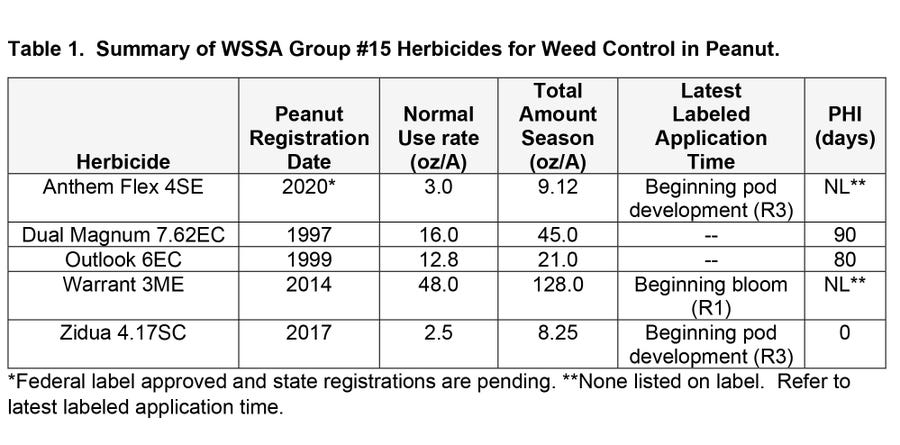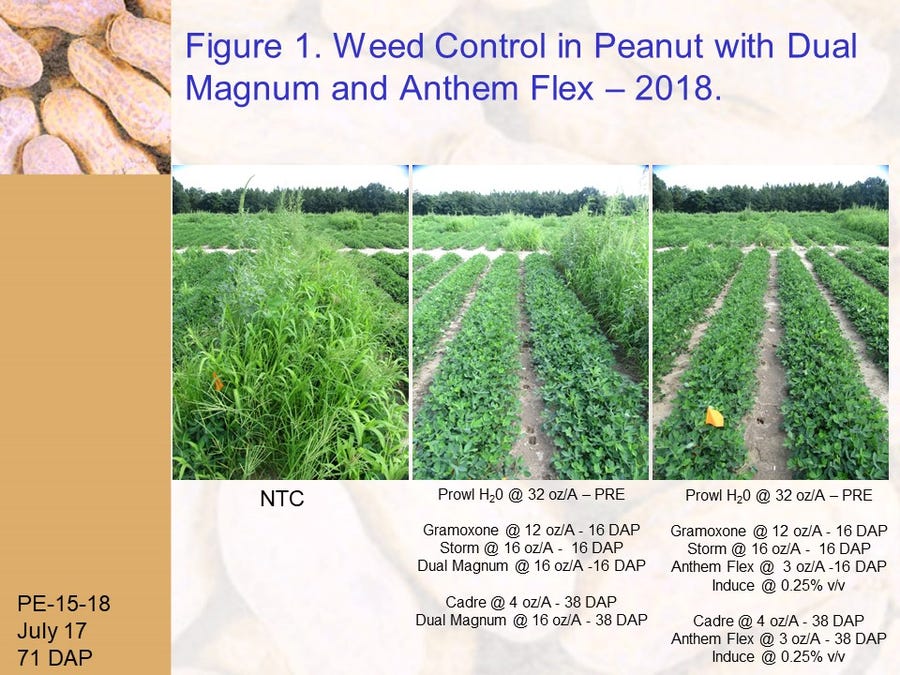April 8, 2020

I recently finished my traveling weed science sideshow and would like to say thanks to all who made it a point to tell me that they enjoyed reading my regular column in the Southeast Farm Press. Authorship of this column is one of my most rewarding and challenging weed science Extension efforts.
Unfortunately, as I get older (and dumber), it gets slightly more difficult for me to write about something new. I will try my very best to continue to entertain my regular readers with science-based information and my sharp Yankee wit!
One of the many topics I discussed this winter was the use of the WSSA Group #15 herbicides. In peanut, these would include products such as Anthem Flex (carfentrazone + pyroxasulfone), Dual Magnum (S-metolachlor), Outlook (dimethenamid-P), Warrant (acetochlor), and Zidua (pyroxasulfone). As a reminder, the WSSA Group #15 herbicides control weeds by inhibiting the synthesis of very long chain fatty acids (VLCFA) in susceptible plants. VLCFA are important components of plant cell membranes.
Here a few things you may or may not know about these important peanut herbicides:
For a quick label summary of these products, check out Table 1.
Dual Magnum, Outlook, and Warrant are all members of the same herbicide family (chloroacetamide).
Pyroxasulfone containing herbicides such as Zidua or Anthem Flex are in the isoxazoline herbicide family. Special Note: At the time this article was penned, the federal peanut label for Anthem Flex was granted but state labels were pending. Also, Anthem Flex contains carfentrazone (Aim) which is a WSSA Group #14 herbicide (PPO-inhibitor).
Dual Magnum, Outlook and Warrant can be applied PRE and/or POST in peanut.
Anthem Flex and Zidua should only be applied POST in peanut. Peanut tolerance to PRE applications of pyroxasulfone herbicides has not been acceptable in my field research trials conducted since 2007.
Generally, all of these herbicides will provided good to excellent control of small-seeded broadleaf weeds (Palmer amaranth), annual grasses (except for Texas panicum), and Benghal dayflower/tropical spiderwort (BD/TSW). However, BD/TSW data is limited for Anthem Flex, Outlook, and Zidua since these herbicides were not very popular or non-existent way back when this weed was the major focus of UGA research.
When applied alone, there may be some slight differences in weed control between these herbicides. However, when applied in my recommend peanut programs, these minor differences often tend to wash out (Figure 1). Thus, I have NO preference between these herbicides when used in my recommended peanut weed control programs (Figure 1).
Unfortunately, 7 weed species have evolved resistance to the Group #15 herbicides world-wide. In the U.S., these would include Palmer amaranth (AR), tall waterhemp (IL), and Italian ryegrass (ID, OR, WA). So, the Group 15’s must not be taken for granted and must be aggressively managed to delay further resistances.
Including the Group #15 herbicides in your peanut weed management program can improve residual weed control and play a significant role in delaying the evolution of PPO-resistance (i.e. Valor/Reflex). But, you also must continue using tillage, cover crops, timely POST herbicide applications, and hand-weeding when practical to further accomplish this crucial task.
As always, good weed hunting!


About the Author(s)
You May Also Like






